
Pricing a bond formula can be a complex task, but understanding the basics is key to making informed decisions. The price of a bond is determined by its yield to maturity, which is the return an investor can expect to earn from the bond.
The yield to maturity is calculated using the bond's face value, coupon rate, and time to maturity. This is where the bond formula comes in – it helps investors determine the present value of the bond's cash flows.
A bond's price is also influenced by its credit rating, which reflects the issuer's ability to repay the bond. A higher credit rating means a lower risk of default, making the bond more attractive to investors.
See what others are reading: Sovereign Bond Rating
What Is a?
A bond is a type of debt instrument that represents a loan made by a creditor to a bond issuer.
Companies issue bonds to raise capital and finance projects, and investors buy bonds for the predictable income they offer.
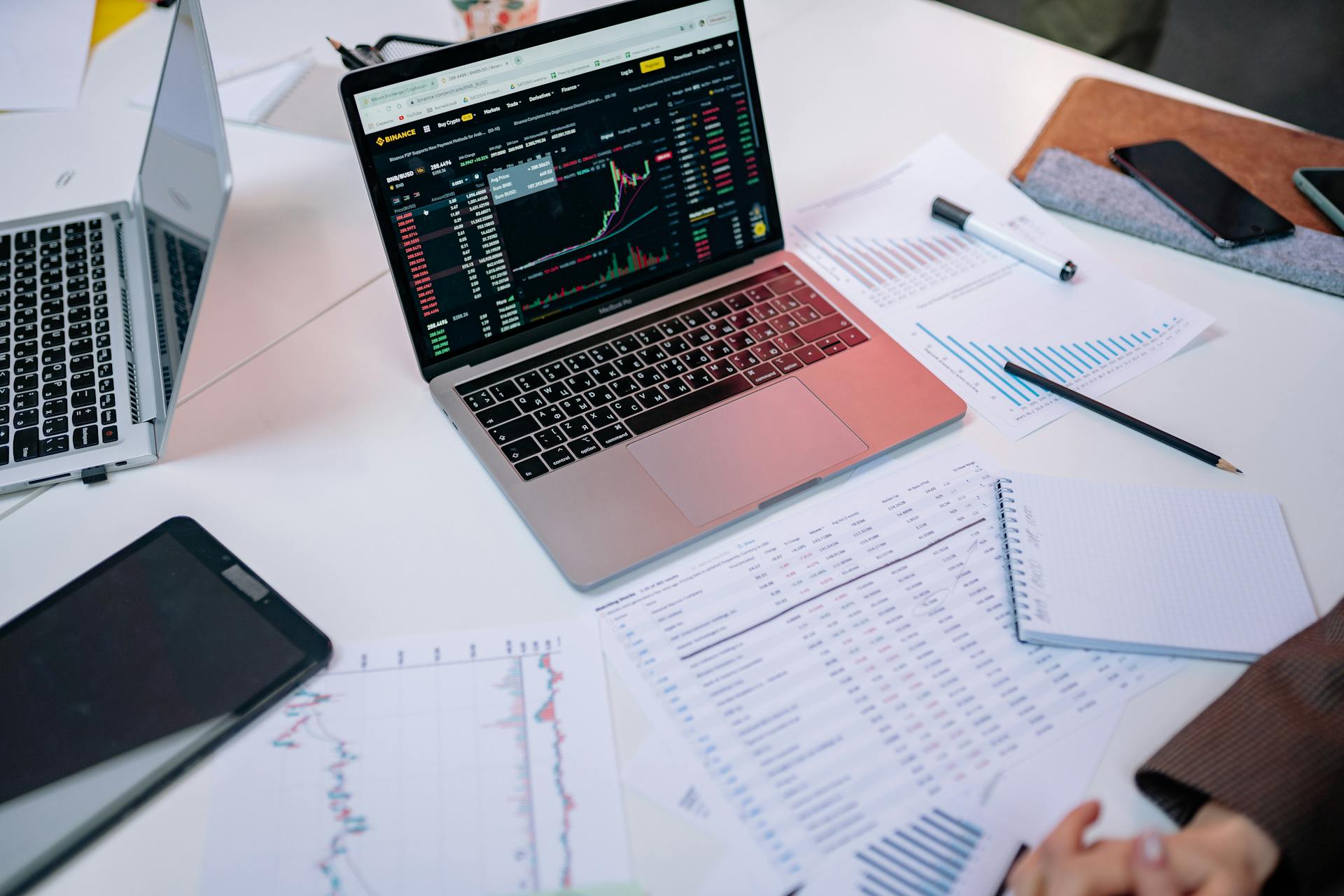
Bonds are typically issued by governments or corporate entities, and the issuer borrows funds at a variable or fixed interest rate.
Investors can earn a profit by holding a bond until it matures, when they'll have earned back their entire principal.
Bond issuance offers an alternative to stock issuance for companies, which can impact company value.
Pricing a Bond Formula
The bond pricing formula is a crucial concept in finance that helps investors determine the value of a bond. The formula takes into account four key factors: Par Value or Face Value, Tenor or Years of Maturity, Yield to Maturity, and Coupon Rate.
The Par Value or Face Value is the actual money borrowed by the lender, typically $100 or $1000 per bond. The principal amount borrowed is the number of bonds purchased multiplied by the par value.
Tenor or Years of Maturity describes the number of years it takes for a bond to mature. This is the time it takes for the issuer to return the par value to the purchaser of the bond.
You might enjoy: Firm Value Calculation
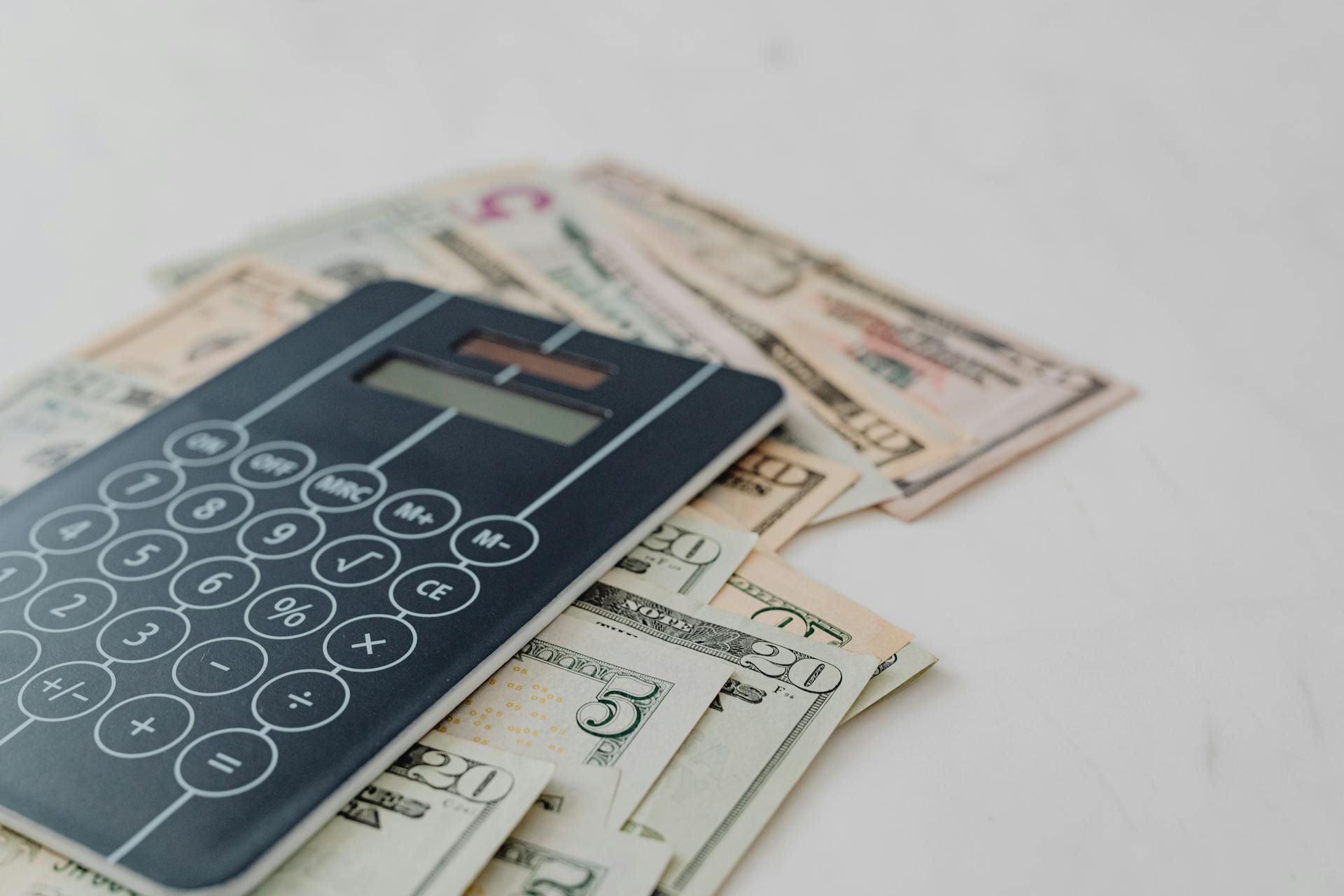
Yield to Maturity is the rate of return the purchaser of a bond will get if they hold the bond until maturity. It's also the prevailing interest rate used to calculate the current market price of the bond.
Coupon Rate is the periodic payment made to the purchaser of the bond as interest payments. It's usually half-yearly or yearly.
To calculate the bond price, we use the concept of Time Value of Money, discounting each coupon payment and the principal payment to their present value based on the prevailing interest rates.
The bond price formula is calculated by taking the present value of all future cash flows (coupon payments and the face value at maturity) and discounting them back to their value today.
Here's a breakdown of the formula using an example:
- Face value: ₹1,000
- Coupon rate: 10%
- Years to maturity: 3 years
- Market yield: 8%
Using the market yield (8%) to discount these future payments back to today's terms, the bond price works out like this:
The bond price is calculated by adding up the present values of all future cash flows, resulting in a price of approximately ₹1,051.
Bond Components
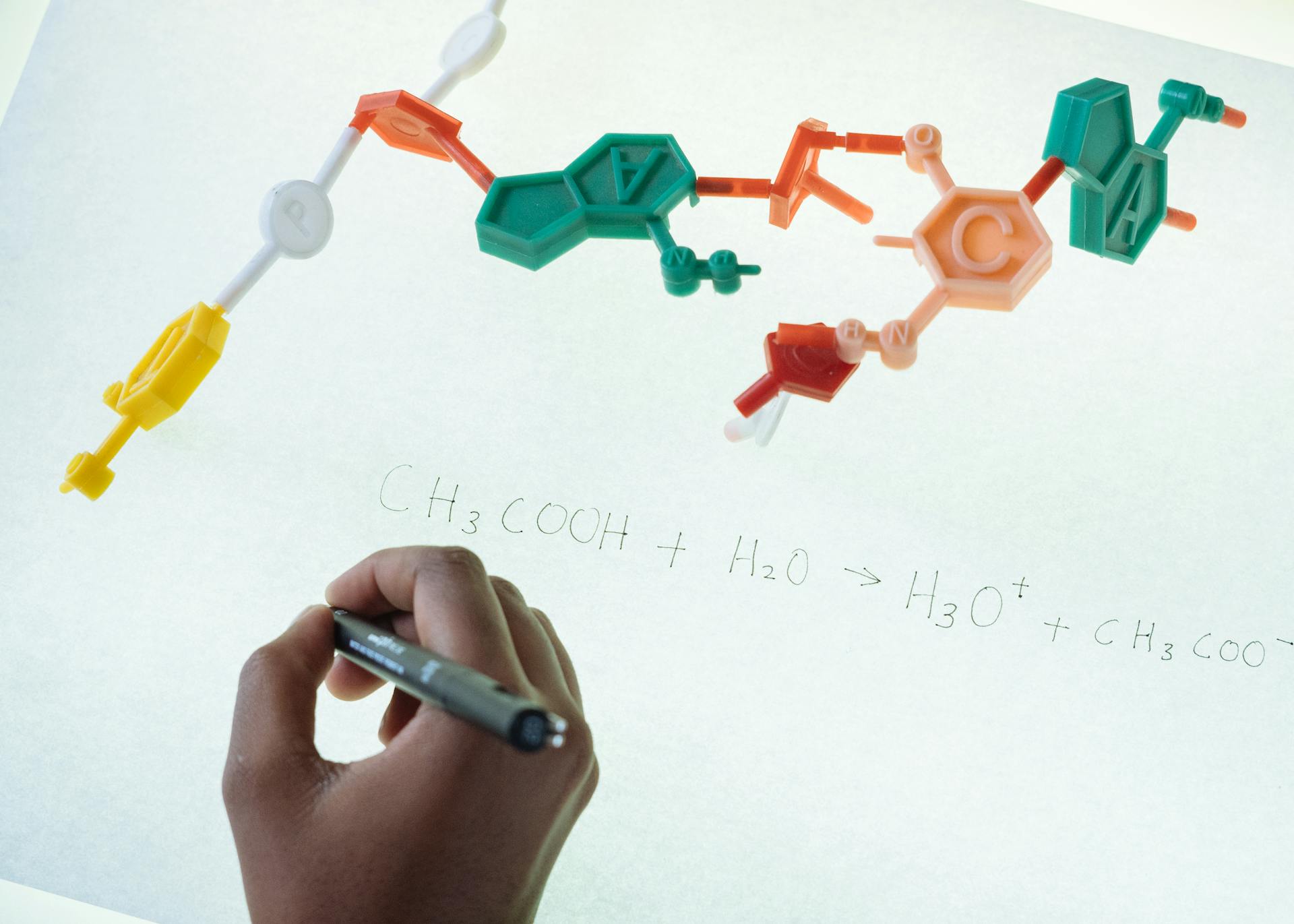
To price a bond, you need to understand its components, which are the face value, annual coupon, and maturity date. The face value, also known as the par value, is the bond's value upon maturity.
The annual coupon rate is the income you can expect to receive from the bond each year. For example, if a bond has a coupon rate of 10%, it means you'll receive 10% of the face value as interest annually.
A bond's maturity date is the date when the bond expires and the face value is repaid to the investor. Knowing these components is crucial before performing any calculations to value a bond.
You might enjoy: Fixed-income Relative-value Investing
Face Value, Coupon, Maturity Date
To determine the value of a bond, you need to identify three key components: Face Value, Annual Coupon, and Maturity Date.
The Face Value, also known as the par value, is the bond's value upon maturity. This is the amount that the bond will be worth when it reaches its maturity date.
A unique perspective: Bond Trade Value Goes down as Maturity Aproaches

The Annual Coupon is the annual income you can expect to receive from the bond. It's like a regular payment that the bond issuer makes to the bondholder.
The Maturity Date is the date when the bond will reach its face value and be redeemed by the issuer.
Here's a summary of these components in a table:
For example, a 3-year, 8% coupon rate, $1000 face value bond has a clear picture of these components.
Value Cash Flows
To value cash flows, you need to calculate the present value of each payment made by the bond. This is done by dividing the cash flow by (1+r), where r is the yield to maturity. For example, if the annual coupon rate is 8% and the yield to maturity is 5%, the present value of the first coupon payment would be $1000 ÷ (1+.05).
The formula to value individual cash flows is Cash Flow Value = Cash Flow ÷ (1+r). To value the final face value payment, you use the formula Final Face Value Payment = Face Value ÷ (1+r). The final face value payment is the bond's par value, which is the amount returned at redemption.
Broaden your view: Amortizing Loan Payment Formula
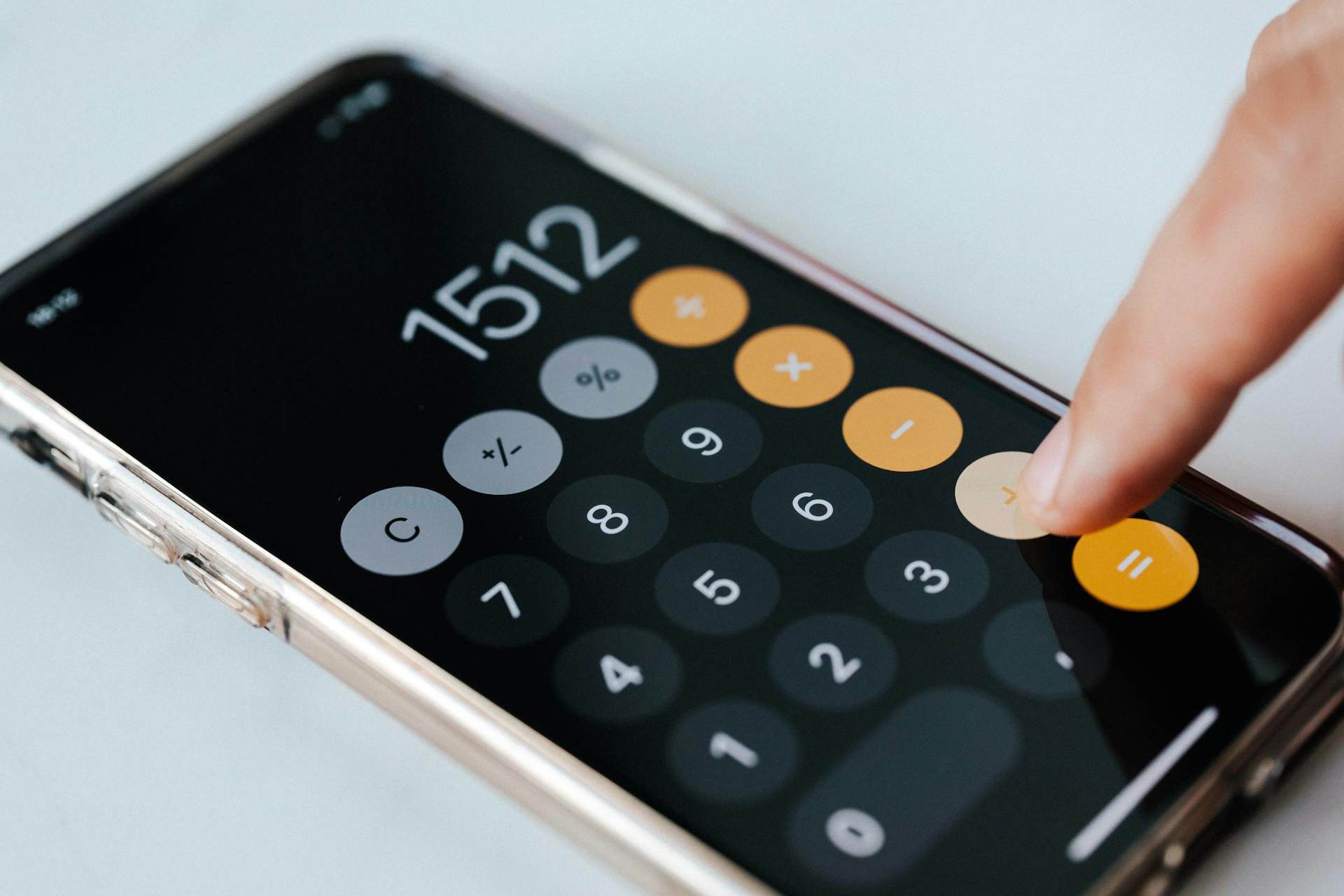
Here's an example of how to calculate the value of a bond's cash flows:
In this example, the bond's face value is $1000, the annual coupon rate is 8%, and the yield to maturity is 5%. The cash flows are calculated using the formula Cash Flow Value = Cash Flow ÷ (1+r). The final face value payment is valued using the formula Final Face Value Payment = Face Value ÷ (1+r).
Readers also liked: Cash Reserve Ratio Formula
Calculating Bond Value
To calculate the value of a bond, you need to value the individual cash flows and the final face value payment. The formula for valuing each cash flow is Cash Flow Value = Cash Flow ÷ (1+r).
The final face value payment is calculated using the formula Final Face Value Payment = Face Value ÷ (1+r). This is important because it shows that the value of the bond decreases over time due to the passage of time and the effect of interest rates.
You can use the following formula to calculate the value of your bond: Cash Flow Value + Final Face Value Payment. This is a straightforward process that involves plugging in the numbers and doing the math.
For example, if you have a bond with a face value of 1,000 and an interest rate of 5%, the value of the first cash flow would be 1,000 ÷ (1+.05).
The maturity date of a bond is the length of time until the bond's principal is scheduled to be repaid to the bondholder. This is an important factor in calculating the value of a bond, as it determines the number of cash flows that will be made.
Here's a quick reference guide to help you understand the bond valuation process:
In finance, the value of something today is the present value of its discounted cash flows. This is also true for bonds, which is why calculating the bond value is an important part of the investment process.
Bond Pricing Concepts
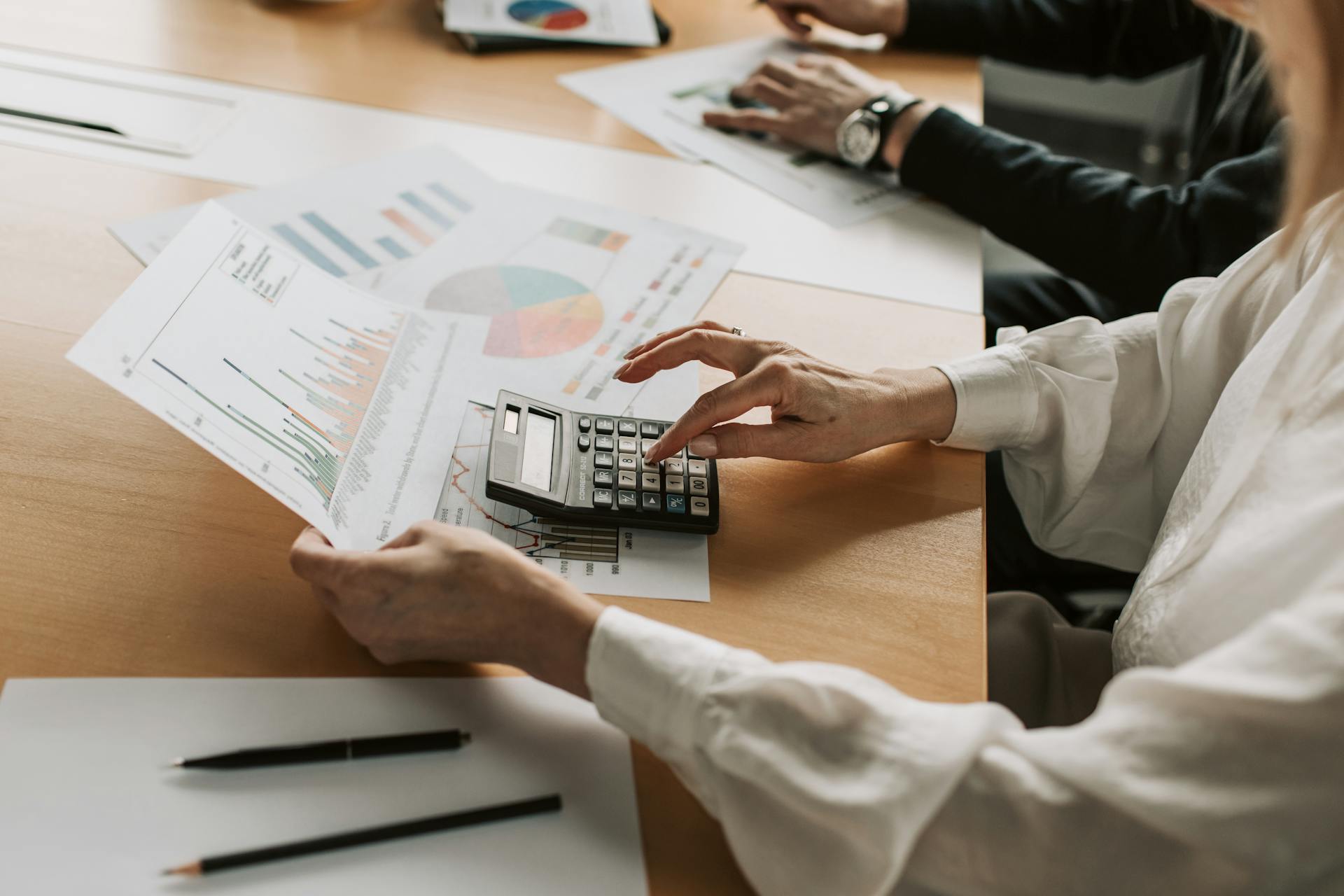
A bond's price can be categorized into three buckets: discount, par, and premium. These terms refer to the price of the bond relative to its face value.
A discount bond trades at a price below its face value, such as $900 for a bond with a face value of $1,000. This means the yield to maturity (YTM) is greater than the coupon rate. On the other hand, a premium bond trades at a price above its face value, such as $1,100 for a bond with a face value of $1,000, resulting in a YTM less than the coupon rate.
The relationship between coupon rate, price, and yield is essential to understanding bond investments. The coupon rate is the fixed interest payment a bondholder receives annually, based on the bond's face value.
Check this out: How to Calculate Yield to Maturity in Excel
Relevance and Uses
Bond pricing is influenced by several key factors. The price of a bond is directly related to its coupon payment, with higher coupon payments resulting in higher prices.
A fresh viewpoint: Zero Coupon Rate Formula
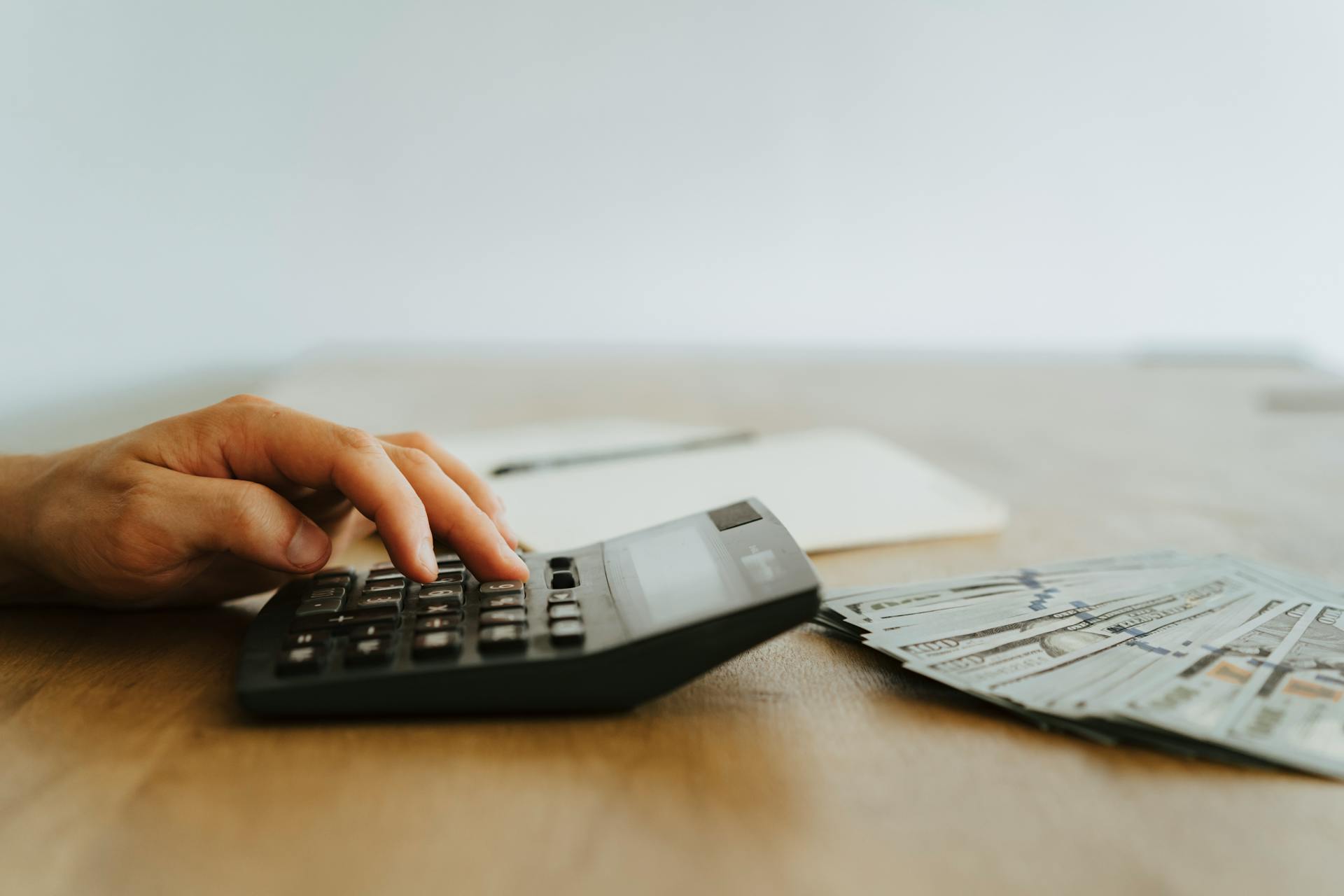
The par value of a bond also plays a significant role in determining its price, with bonds having higher par values commanding higher prices.
A bond's years to maturity also impact its price, with bonds having longer maturities typically having higher prices. Conversely, a bond's yield to maturity inversely affects its price, with bonds offering higher yields having lower prices.
Credit rating is another crucial factor in bond pricing, with bonds issued by highly rated companies commanding lower yields due to their perceived lower risk. This means that investors can expect higher returns from bonds with lower credit ratings.
Liquidity in the secondary market also impacts bond prices, with bonds that are frequently traded typically having higher prices than those that are less liquid. The time to the next coupon payment is another factor, with bonds that have their next payment soon requiring a lower price to compensate for the shorter wait time for the bondholder.
Here's a summary of the key factors that affect bond prices:
- Coupon payment: Higher coupon payments result in higher prices
- Par value: Higher par values result in higher prices
- Years to maturity: Longer maturities result in higher prices
- Yield to maturity: Higher yields result in lower prices
- Credit rating: Higher credit ratings result in lower yields
- Liquidity: Higher liquidity results in higher prices
- Next coupon payment: Shorter wait time results in lower prices
Discount vs. Par: Key Differences
A bond's price can be categorized into three main types: discount, par, and premium.
A discount bond trades below its face value, such as a bond priced at $900 for a $1,000 face value. This means the bond is selling at a discount, with a yield to maturity greater than the coupon rate.
The price of a bond is directly affected by its yield to maturity and coupon rate. If a bond's yield to maturity is higher than its coupon rate, it's considered a discount bond. Conversely, if the yield to maturity is lower than the coupon rate, it's a premium bond.
Here's a summary of the key differences between discount and par bonds:
A par bond, on the other hand, trades at its face value, with a yield to maturity equal to the coupon rate.
The pricing of a bond directly affects its current yield and coupon rate. If a bond's price is below its par value, it's considered a discount bond. If the price is equal to the par value, it's a par bond. If the price is above the par value, it's a premium bond.
Check this out: Bond Book Yield Calculation
How to Call

Calling a bond is a strategic decision made by the issuer to redeem the bond earlier than the scheduled maturity date. This can be done to take advantage of lower interest rates.
Issuers are more likely to call a bond earlier than scheduled due to refinancing debt in a lower interest rate environment or reducing the proportion of debt in the capital structure.
Refinancing debt in a lower interest rate environment can save the issuer money on interest payments. This is a common reason for issuers to call bonds.
Reducing the proportion of debt in the capital structure can also be a reason for issuers to call bonds. This helps to maintain a balanced capital structure and reduce financial risk.
Here are some common reasons for issuers to call bonds:
- Refinancing debt in a lower interest rate environment
- Reducing the proportion of debt in the capital structure
How to Worst
Calculating the yield to worst (YTW) is a crucial step in understanding bond pricing concepts. It's the lowest potential return received by a lender, assuming the issuer does not default.
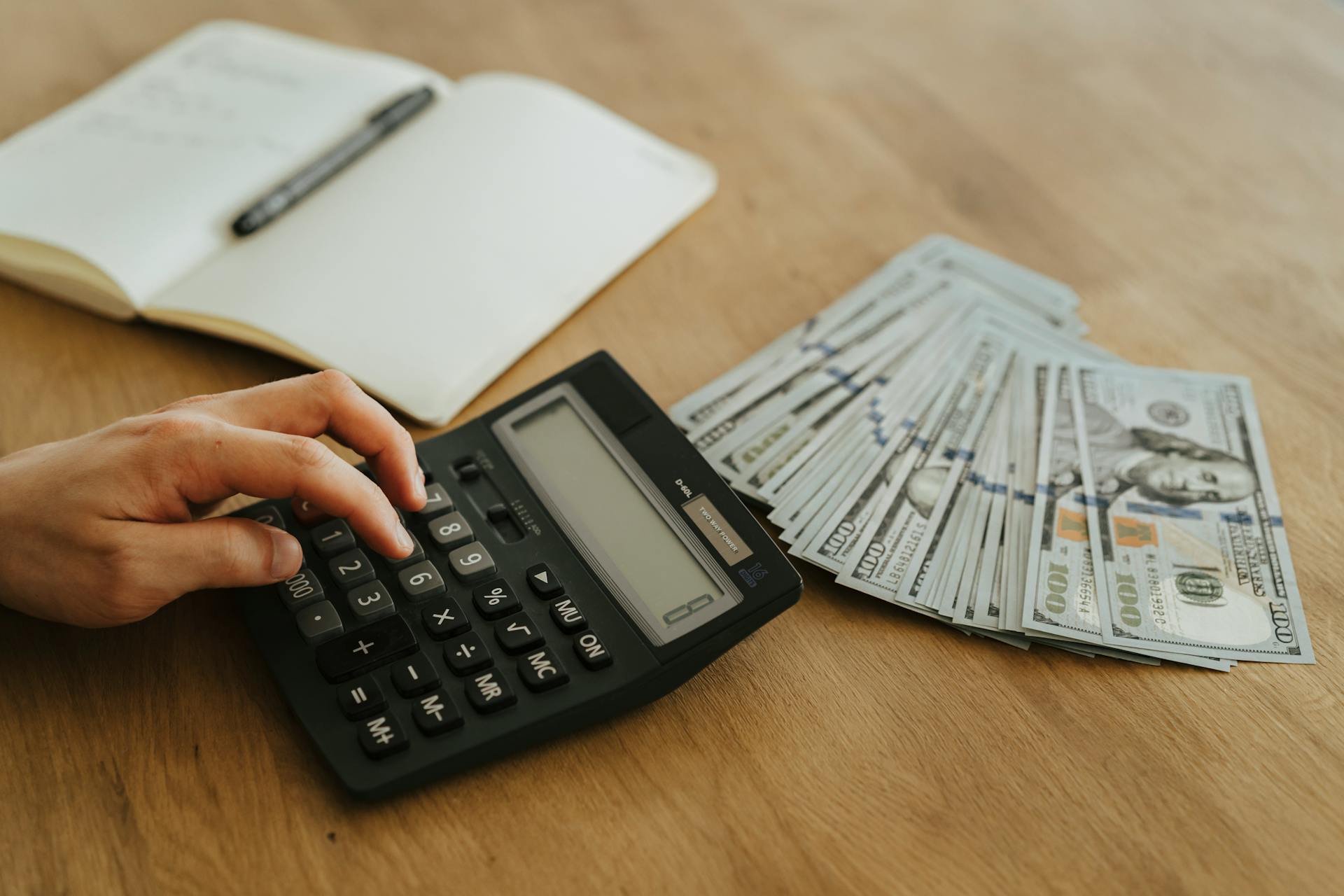
The YTW is applicable only for callable bonds and those trading at a premium. This is because callable bonds can be redeemed by the issuer at the earliest possible date, making the YTW a worst-case scenario.
To calculate the YTW, you need to determine the lower value between the yield to maturity (YTM) and the yield to call (YTC). This can be done using the "MIN" Excel function.
A premium bond is likely to have a lower YTW compared to a discount or par bond. This is because the issuer is more likely to redeem the bond early, especially if interest rates have declined.
Here are some examples of YTW calculations:
The YTW is the "floor yield", providing a conservative estimate of the return on investment. It's essential to consider this when investing in bonds, especially callable ones.
Pure Discount
A pure discount bond, also known as a zero-coupon bond, has a coupon rate of 0%. This means that any compensation to the bondholder comes solely from the difference between the bond's purchase price and the face value of the bond.

The price of a pure discount bond can be calculated using the formula: Price = PV = F / (1 + r)^T, where F is the face value, r is the annual discount rate, and T is the maturity in years.
For example, if a bond has a face value of $100,000, a maturity of 8 years, and an annual discount rate of 9%, the bond should sell for approximately $50,186.63.
The purchase price of a pure discount bond is always lower than its face value, as the bondholder is essentially paying for the future face value of the bond.
The bond's price is determined by the difference between the face value and the present value of the bond, which is calculated using the discount rate and maturity.
Intriguing read: 30 Year Us Treasuries
Bond Calculations
Bond calculations involve determining the yield to maturity (YTM) of a bond, which can be calculated using a formula in Excel.
The yield to maturity (YTM) for a discount bond is 11.16%, for a par bond it's 8.50%, and for a premium bond it's 6.15%.
You can use these values to understand the different types of bond pricing and how they're calculated.
You might enjoy: The Yield to Maturity on a Discount Bond Is
Examples
Let's break down some examples of bond pricing to make it more relatable.
The bond pricing formula is often used to calculate the present value of a bond, which is the value of the bond today.
To understand this, let's take a look at an example of the bond pricing formula in action.
The formula takes into account the bond's face value, coupon rate, and time to maturity, among other factors.
For instance, if a bond has a face value of $1,000 and a coupon rate of 5%, its present value can be calculated using the formula.
The formula will give you the present value of the bond, which can be used to determine its value today.
Current Calculation
Calculating the current yield of a bond is a straightforward process that involves dividing the annual coupon payment by the current market price. This metric is essential in understanding the bond's potential return on investment.
The current yield can fluctuate based on the market price of the bond, unlike the coupon rate which remains fixed. This means that as the bond's price changes, so does its current yield.
To calculate the current yield, you'll need to know the bond's annual coupon payment, current market price, and face value. The formula is: current yield = annual coupon payment / current market price.
A bond trading at a discount, at par, or at a premium to par can have a different current yield. For example, a bond trading at a discount might have a higher current yield compared to one trading at a premium.
Here's a summary of the current yield calculation:
- Current Yield – Discount Bond = 9.44%
- Current Yield – Par Bond = 8.50%
- Current Yield – Premium Bond = 7.73%
These figures illustrate how the current yield changes depending on the bond's market price.
Call (YTC) Calculation
Calculating the yield to call (YTC) is a crucial step in understanding the value of a callable bond. This metric assumes the bond is redeemed before the stated maturity date.
The call price is a key factor in YTC calculation, and it's the price the issuer must pay to redeem the bond entirely or partially. In our example, the call price is set at "104".

To calculate YTC, you need to know the call date, which is the first date on which the bond can be redeemed. This is typically the earliest call date.
Here's a breakdown of the YTC calculation for different types of bonds:
Issuers are more likely to call a bond earlier than scheduled due to refinancing debt in a lower interest rate environment or reducing the proportion of debt in the capital structure.
Worst (YTW) Calculation
Calculating the yield to worst (YTW) is a crucial step in bond analysis. It's the minimum return you can expect from a callable bond, assuming the issuer doesn't default.
The YTW calculation is based on the yield to maturity (YTM) and the yield to call (YTC). The "MIN" Excel function is used to determine the lower value between the two.
For a discount bond, the yield to worst (YTW) is 11.16%. This is significantly higher than the yield to worst for a par bond, which is 8.50%.
The yield to worst (YTW) for a premium bond is 5.10%. This is the lowest potential return for a lender, assuming the issuer doesn't default.
Here's a summary of the yield to worst (YTW) calculations for different types of bonds:
In real life, the yield to worst (YTW) is applicable only for callable bonds and those trading at a premium. This means you need to consider the potential for the issuer to redeem the bond early when calculating the YTW.
Calculation Tutorial Assumptions
To start a bond calculation, you'll need to establish some key assumptions. The bond issuance has a maturity of five years, and the financing was finalized on December 31, 2021.
The settlement date is December 31, 2021, and the maturity date is December 31, 2026. The first call date is December 31, 2023, which is two years after the settlement date.
The bond's par value is $1,000, and the prices for each scenario are as follows:
The bond pays an annual coupon at an interest rate of 8.5%, with an annual coupon of $85.
Frequently Asked Questions
How do you quote a bond price?
Bond prices are quoted as a percentage of the bond's face value, which can be easily understood by adding a zero to the quoted price. This simple trick helps investors quickly grasp bond prices and make informed decisions.
Sources
Featured Images: pexels.com


